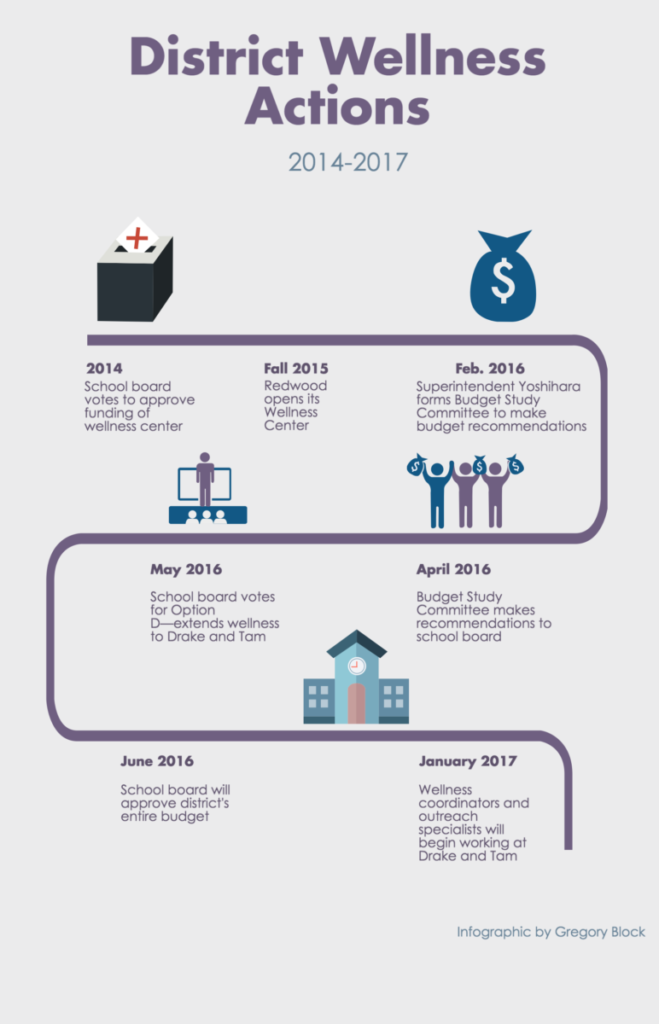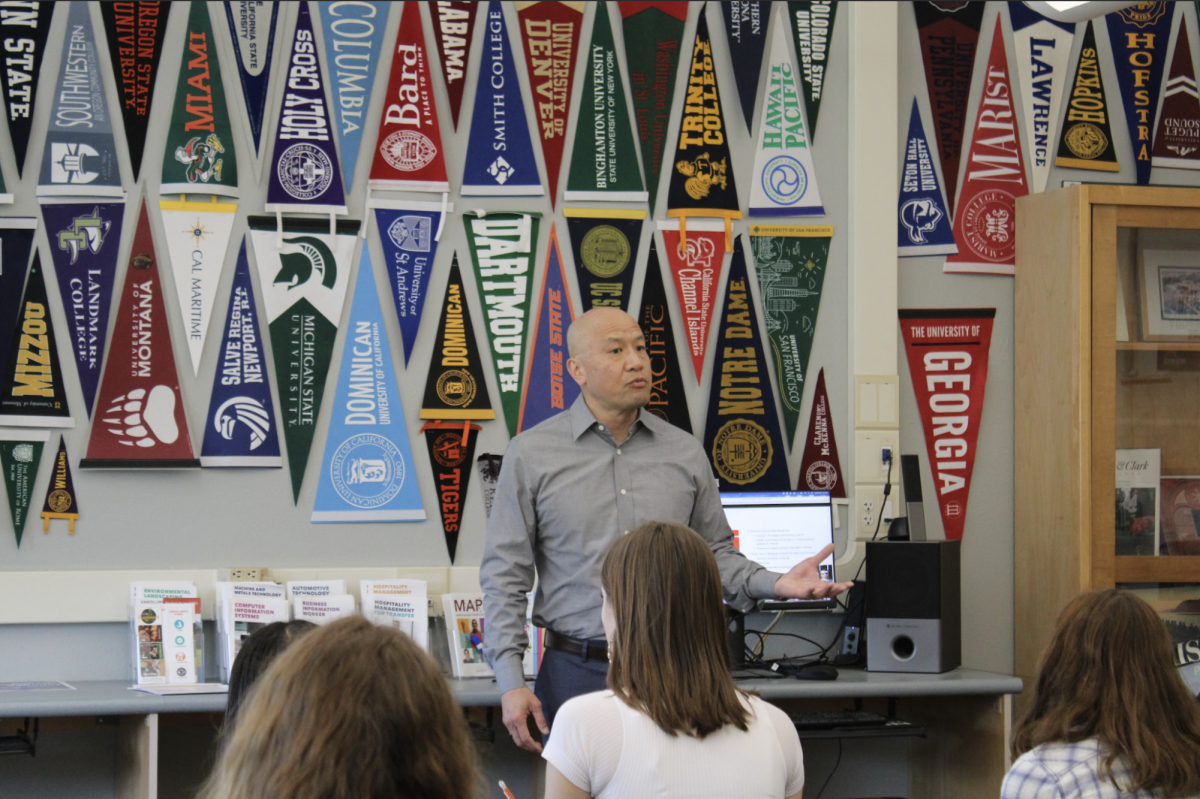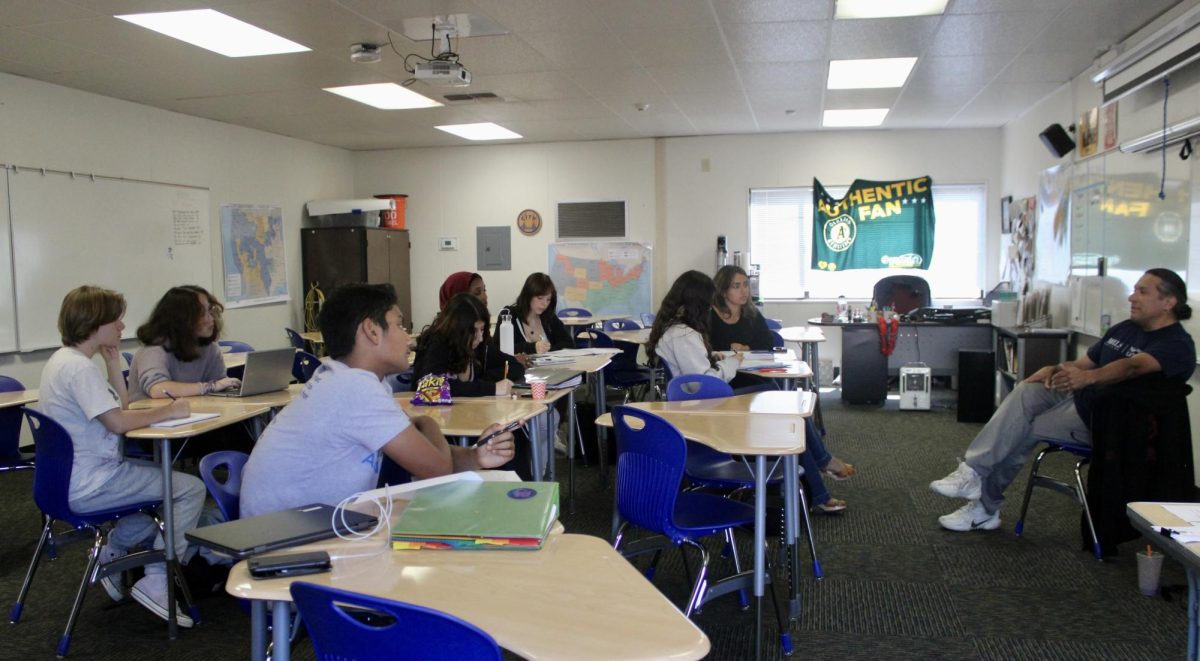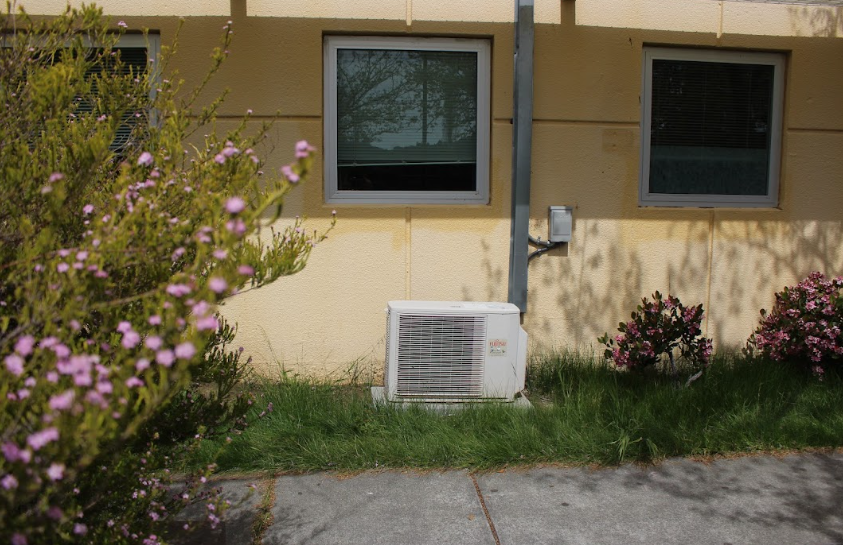The TUHSD school board voted to expand the district’s wellness program to Tam and Drake on May 10 after an emotional months-long process for community supporters and the board.
The extension of wellness will consist of the hiring of part-time wellness coordinators at the two schools as well as a wellness outreach specialist at Drake, all of whom will work four days per week.
The board voted 3-2 to pass this particular version of the wellness staffing plan, with board members Chuck Ford, Laura Anderson and board president Michael Futterman voting yes, and Barbara Owens and Leslie Lundgren voting no.
Other staffing options called for the elimination of all wellness staffing, a “freeze” on wellness staffing or hiring all wellness staff to work five days a week, as originally planned under the leadership of former superintendent Laurie Kimbrel.
The proposals were designed by the Department of Educational Services and were reviewed by senior executives in the district, according to District Superintendent David Yoshihara.
The vote to expand wellness also contained the district’s entire staffing plan for the 2016-2017 school year.

District Wellness Coordinator Jessica Colvin said that prior to the meeting, she was unsure whether the board would fund wellness, regardless of the level of community support.
“I went in feeling nervous, having not really a clue what was going to happen and also feeling a ton of support from the community, but knowing that regardless of the support from the community the board members were the decision makers,” Colvin said.
Yoshihara hypothesized that the board members who voted against the plan did so because they felt that they needed more information.
“I think for the board members that voted no, the sense that I got was that there was concern around the cost of the program as well as perhaps needing more information about it from what I understand,” Yoshihara said. “It demonstrates that we have five individual board members and they all have their own individual filters and thoughts in terms of how they make the decision.”
Community members, including parents, teachers and students, attended many of the past board meetings to demonstrate their support for the wellness programs.
Yoshihara believes the support for the expansion of wellness to Drake and Tam was prompted by the schools’ desire for similar facilities.
“It’s almost like siblings in a way. What does this school get or what does that school get?” Yoshihara said. “That has always been the existence over time. Drake has an SLC program, Tam has a looping concept for ninth and tenth graders, so they have different models of learning and so I would encourage that we allow our schools to have different models of what wellness can look like. ”
Yoshihara said that the wellness decision will have a greater impact on Drake and Tam than it will at Redwood.
“From my understanding the action that was taken has less impact, if any, on Redwood,” Yoshihara said.
Historically, Yoshihara believes that the community has been just as passionate about other issues as they have been about wellness, and knowing this helps him to remain subjective on the issue of wellness and wellness staffing.
“If you go back and look at the history of our district, there are certain topics whether it’s turf fields or teachers or math, there are certain things that certainly get them very impassioned. So this is one that got a certain segment of our parent community and some extent our student community very impassioned,” Yoshihara said.
Colvin said the community support from all three schools was inspiring, especially considering the interest and time commitment of parents and students.
“Some of them are there because they believe it’s right for kids. Some of them have their own kids who have had their own issues around health and wellness,” Colvin said. “Everyone’s there for their own reason and I’ve had the pleasure of getting to know a lot of those community members and seeing their passion.”
Since the district’s budget will still run a deficit, a group of PTSA and foundation leaders from each high school have come together to brainstorm other methods of revenue to support wellness, such as sponsorships, according to Yoshihara.
“We talked about if you can have a district-wide foundation,” Yoshihara said. “We talked about taxation measures, particularly a parcel tax. Can we go out to the community and solicit support for a tax that would generate revenue to support wellness?”
However, when it comes to the expansion of wellness programs beyond part-time staffing at Drake and Tam, Yoshihara attempts to remain neutral.
“I don’t know if I ever had an opinion [about wellness],” Yoshihara said. “I think I tried to remain as subjective in regards to the social and emotional wellbeing of our students, and our staff in all fairness too.”
Yoshihara said that passing the budget for wellness staffing doesn’t lower the overall deficit, and that the deficit still must be addressed through funding cuts in other areas.
“We still need to reduce the budget, or in fairness, to increase revenue. At the end of the day, something has to go. We haven’t solved [the structural deficit],” Yoshihara said.
Yoshihara said that the most important factor in making wellness effective would be the ability of each school to determine what its own program should look like with respect to student need.
“I think our kids are sensitive to that if a model exists at one school, it may or may not be the best model to exist at others,” Yoshihara said. “I would encourage that we allow our schools to have different models of what wellness can look like.”
Colvin believes that the board’s approval is the first step in a broader trend of discussing issues related to health and wellness.
“These are issues that are often swept under the rug. They are not pretty issues. A lot of people don’t want to talk about stress or depression or anxiety,” Colvin said. “It’s shown pretty clearly to me that this community is ready to talk about these issues and ready to deal with them.”
While the wellness decision gained sustained community attention, the board still has to formally approve the entire district budget, which it plans to do at a meeting in June.
In the meantime, Colvin feels grateful that wellness is being funded at all, even with the announcement of part-time employment for staff at Drake and Tam.
“I’m so thankful that the board passed what they passed, given the budget climate, and that they put the faith into our program to give us the [four-day-a-week] positions,” Colvin said. “I will make do with those and help create something wonderful at both of those schools with the [four-day-a-week positions].”















